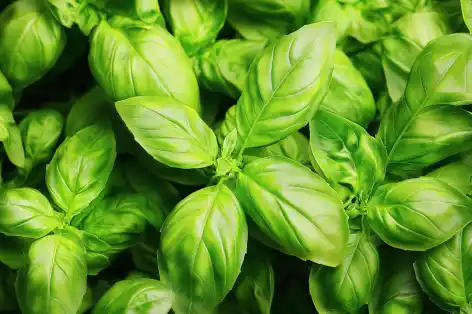Growing fresh basil at home is one of the most rewarding experiences for both seasoned gardeners and beginners. Basil adds vibrant flavor to dishes from pasta sauces to salads and is relatively easy to cultivate. This guide will walk you through everything you need to know to successfully grow basil, care for it, and make the most of your harvest.
1. Choosing the Right Basil Variety
There are several types of basil to choose from, depending on your culinary needs and personal preferences. Here are some of the most popular varieties:
- Sweet Basil (Genovese): This classic variety is perfect for Italian cooking, particularly pesto and tomato-based dishes.
- Thai Basil: With a slightly spicy, anise flavor, Thai basil is ideal for Asian dishes like curries and stir-fries.
- Lemon Basil: Adds a refreshing citrusy taste to salads, drinks, and seafood dishes.
- Purple Basil (e.g., Red Rubin): Known for its deep purple color, it’s a striking addition to both your garden and your plate, offering a mild basil flavor.
Each variety has unique characteristics, so consider what kind of dishes you like to cook when selecting the right basil for your home garden.

2. Planting Basil: Seeds, Cuttings, or Transplants?
You can start growing basil in several ways, and each method has its benefits.
Growing Basil from Seeds
Starting basil from seeds is cost-effective and rewarding. Sow the seeds indoors 6-8 weeks before the last frost in your area, or directly outdoors once the danger of frost has passed.
- Prepare the soil by loosening it and mixing in organic compost.
- Sow the seeds 1/4 inch deep in well-drained soil and water gently.
- Provide warmth and sunlight. Basil seeds need temperatures around 70°F to germinate. Ensure they get plenty of sunlight—at least 6-8 hours a day.
Growing Basil from Cuttings
Propagating basil from cuttings is quick and easy. Simply:
- Cut a healthy basil stem just below a leaf node (about 4 inches long).
- Place the cutting in water until roots form (about 1-2 weeks).
- Transfer the rooted cutting to soil in a pot or garden bed.
Using Transplants for Basil
If you’re short on time, you can purchase basil transplants from a nursery or garden center. Transplant basil into your garden or containers after the last frost, spacing them about 12 inches apart to allow for airflow and growth.
3. How to Care for Basil Plants
Once your basil is planted, proper care ensures healthy growth and a steady supply of fresh leaves. For an in-depth guide on basil care, check out this helpful resource on growing and caring for basil.
Light Requirements
Basil thrives in full sun, requiring at least 6-8 hours of sunlight each day. If growing indoors, place your basil near a sunny window or use grow lights.
Watering Basil
Basil likes to be consistently moist but not waterlogged. Water your plants deeply once the top inch of soil feels dry, but avoid overwatering, as this can lead to root rot.
Ideal Soil Conditions
Basil grows best in nutrient-rich, well-drained soil with a pH level between 6.0 and 7.0. If planting in containers, use a high-quality potting mix with added compost.
Temperature and Climate
Basil is a warm-weather plant that grows best in temperatures between 70°F and 85°F. Protect it from cold snaps, as temperatures below 50°F can damage the plant.
Fertilizing Basil
Feed basil every 4-6 weeks with organic fertilizer, such as compost or fish emulsion. Avoid over-fertilizing, which can diminish the flavor of the leaves.
Pruning and Harvesting
Prune basil regularly by pinching off the top few leaves to encourage a bushier plant. Harvest leaves from the top, just above a pair of leaves, to promote continuous growth. Always harvest before the plant starts flowering for the best flavor.
4. Common Problems with Basil Plants
Even though basil is relatively low maintenance, it can still face a few issues. For tips on growing a variety of herbs, check out our Ultimate Guide to Starting a Kitchen Herb Garden.
Basil Pests
Aphids, whiteflies, and spider mites are common basil pests. Combat them with organic solutions like neem oil or insecticidal soap.
Diseases Affecting Basil
Basil is prone to fungal diseases such as downy mildew and fusarium wilt. Ensure good air circulation around your plants and water at the base to avoid wetting the leaves, reducing the risk of disease.
Decaying or Yellow Leaves
Yellowing leaves can be a sign of overwatering or poor soil drainage. Adjust your watering routine and make sure the soil is well-drained. If the plant is turning yellow due to nutrient deficiency, use a balanced organic fertilizer to restore its health.
5. Indoor vs. Outdoor Basil: Growing Tips
Basil can thrive both indoors and outdoors, provided it has the right conditions.
Growing Basil Indoors
If growing indoors, place your basil near a south-facing window to ensure it receives ample light. Alternatively, use grow lights to supplement light levels during winter months. Keep your basil in well-drained pots, and be mindful of indoor pests like spider mites.
Growing Basil Outdoors
Outdoor basil needs space to grow. Plant it in a sunny spot in your garden with plenty of space between each plant for airflow. Use mulch to retain moisture and keep the roots cool during hot weather.
6. How to Harvest, Store, and Use Basil
Once your basil is thriving, it’s time to harvest and enjoy it in your kitchen.
How to Harvest Basil
Harvest basil leaves before they flower, as this is when their flavor is at its peak. Pinch off the top few inches of the plant to encourage more growth.
Storing Fresh Basil
For short-term storage, place basil stems in a glass of water on the counter. For long-term storage, basil can be frozen in olive oil in ice cube trays or dried in a well-ventilated, dark area.
Creative Ways to Use Basil
Basil is incredibly versatile. Use it fresh in salads, sauces, and soups, or make classic pesto. You can also infuse olive oil or vinegar with basil for a flavorful addition to dishes.
7. Expert Tips for Thriving Basil Plants
Here are a few tips to ensure your basil remains healthy and productive all season long:
Companion Planting with Basil
Basil grows well when planted alongside tomatoes, peppers, and lettuce. It not only enhances the flavor of these vegetables but also helps repel pests like aphids and mosquitoes.
Best Practices for Growing Basil Year-Round
To enjoy basil year-round, start a new batch every few weeks indoors or outdoors. This ensures you always have fresh basil available for cooking, regardless of the season.
Frequently Asked Questions (FAQs)
Q: Can I grow basil year-round indoors?
Yes, basil can be grown indoors year-round with proper lighting and care. Grow lights can help provide the necessary sunlight during the winter months.
Q: How do I prevent basil from bolting?
To prevent bolting, pinch off any flower buds as soon as they appear. Bolting occurs when the plant focuses on reproduction rather than leaf production, resulting in a less flavorful harvest.
Q: Why are my basil leaves turning yellow?
Yellow leaves are often a sign of overwatering or poor drainage. Check the soil moisture and adjust your watering habits accordingly.
By following this guide, you’ll be well on your way to growing vibrant, healthy basil plants at home. Whether you’re cultivating basil indoors or outdoors, the result will be a constant supply of fresh herbs for your favorite dishes. Happy gardening!


1 thought on “Growing Fresh Basil at Home: A Beginner’s Guide”